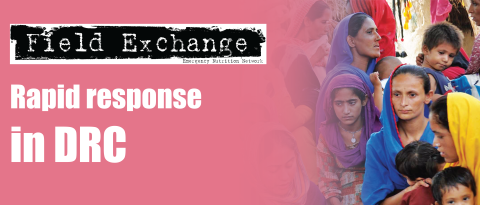ACF application to add RUTF to EML sparks lively discussion on en-net
By Tamsin Walters, en-net moderator
Contributions on en-net from Sameh Al-Awlaqi, Dr. Charulatha Banerjee, Paul Binns, Bindi Borg, Jessica Bourdaire, Chris, Suzanne Fuhrman, Michael B. Krawinkel, Paul Mabany, Emily Mates, Kalufenye Ngengele, Sonja Read, Yara Sfeir.
ACF announced on en-net (http://www.en-net.org/question/2799.aspx) their application to the WHO Expert Committee on the Selection and Use of Essential Medicines for RUTF to be accepted to the EML and requested the en-net community to get involved through writing letters in support by 24 February 2017. This announcement created a vibrant discussion on en-net (http://www.en-net.org/question/2799.aspx). Whilst many people support the initiative, several important concerns were raised. These include:
Whether the RUTF composition proposed in the submission would be binding and what might this mean for local production of RUTF and the use of different recipes; sensitivities were raised around the ‘commercialisation of malnutrition’ aspects. If the standards for manufacture change as a result of the listing, consequences such as increased difficulty and cost of production could potentially create a barrier to access rather than the intended removal of a barrier. Neither the report nor the submission document adequately addresses this issue.
Why the advocacy initiative is restricted to RUTF and does not include F75 and F100 as well? What are the potential knock-on effects for similar formulations such as Ready to Use Supplementary Foods (RUSF), other Lipid Nutrient Supplements (LNS) products, and formula milk powders?
One contributors queried whether there is sufficient evidence of the sustained success of RUTF-administration when it comes to re-introduce family foods
Whether the “essential medicines” list is the right place or should it rather be on the “essential supplies” list. A previous investigation in Ethiopia found that if the product is considered a medicine, it must be produced under pharmaceutical conditions. This would considerably increase the price of any locally produced product. It would also have to be approved for usage by the relevant country authority; a process which can take several years. There is no analysis in the submission regarding the potential cost increases and pipeline issues that may result from being listed as a medicine.
Concerns regarding the technical information contained in the submission, such as the "strength" and "therapeutic dose regimen and length of treatment" sections. Protocols are not consistent in application of these aspects and some recent studies have achieved good results with varying doses of RUTF during treatment.
ACF responded that global action could influence countries to integrate the product into national EMLs, ultimately leading to increased prioritisation of SAM treatment with RUTF, increased budget allocation and improved inclusion within the health system and supply chain. These are critical factors to increase the availability and access to SAM treatment. The document submitted does not necessitate restricting the 'dosage' to that recommended in the submission and the composition as listed in the application is not binding. The submission proposes to add RUTF to the list as a ‘miscellaneous item’, not as a medicine.
While all contributors agree that this is an important debate, the final post called for an enhanced process of engagement on this proposal that enables the considered opinion of a wider group of stakeholders to be heard at the most senior levels. As the outcome is intended to have a global effect, it is important to understand the implications fully, across different countries, and for the conclusions to be supported by more than one organisation.


